Table of Contents
Ceylon cinnamon (Cinnamomum verum) and Cassia cinnamon (Cinnamomum cassia) are two distinct varieties of cinnamon with significant differences in flavor, appearance, health benefits, and safety. Ceylon cinnamon, often called "true cinnamon," is lighter in color, has a more delicate flavor, and contains very low levels of coumarin. Cassia cinnamon, commonly found in supermarkets, is darker, has a stronger flavor, and contains higher levels of coumarin which can be harmful in large quantities.
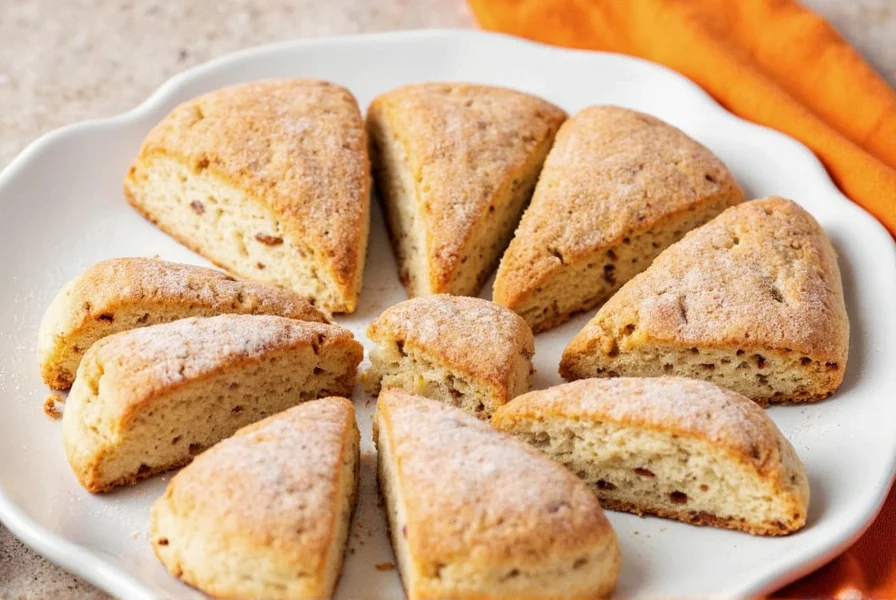
What Is Cinnamon, Really?
Cinnamon isn't just one thing — it's actually a family of tree species that produce aromatic bark used as a spice. The two most common types are:
- Ceylon Cinnamon (Cinnamomum verum): Often called "true cinnamon." Native to Sri Lanka (formerly Ceylon), it's more delicate, expensive, and harder to find. According to the USDA Agricultural Research Service, Ceylon cinnamon is the original cinnamon variety used in ancient times.
- Cassia Cinnamon (Cinnamomum cassia): This is what you usually find in supermarkets. It comes from China and Indonesia and is more affordable and robust in flavor. The European Food Safety Authority (EFSA) has issued specific guidelines regarding coumarin content in Cassia cinnamon.
The Big Reveal: Ceylon vs Regular Cinnamon
Now let's get down to brass tacks — what exactly sets these two apart?
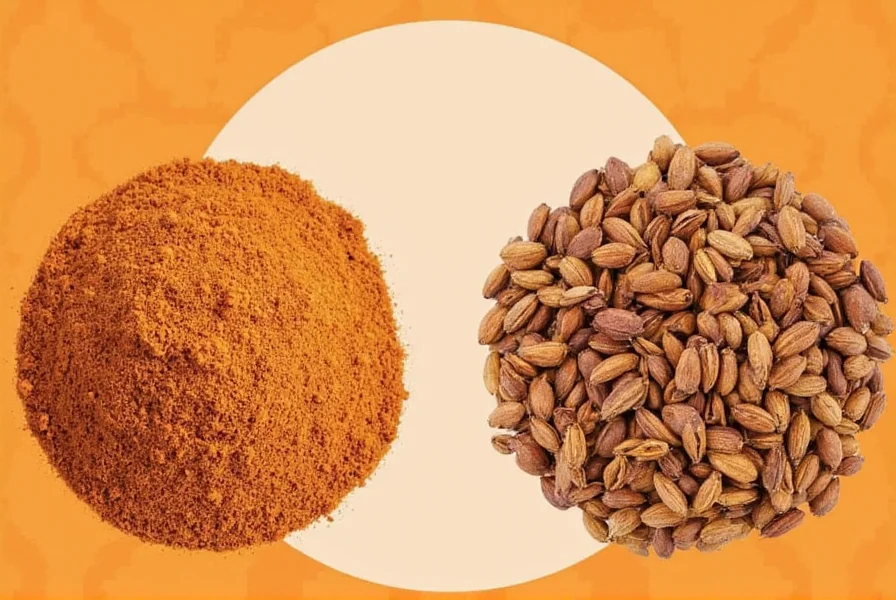
At first glance, they look similar. But once you know what to look for, it becomes easier to tell them apart:
- Appearance: Ceylon cinnamon has thin, papery layers that form a tight spiral. Cassia is thicker, rougher, and looks like a solid log.
- Texture: Ceylon feels lighter and breaks easily. Cassia is hard and woody.
- Price: Ceylon can be up to 10 times more expensive than Cassia due to its rarity and labor-intensive harvesting process.
| Feature | Ceylon Cinnamon | Cassia Cinnamon |
|---|---|---|
| Scientific Name | Cinnamomum verum | Cinnamomum cassia |
| Origin | Sri Lanka | China, Indonesia |
| Texture | Thin, flaky, delicate | Thick, hard, woody |
| Color | Pale brown | Dark reddish-brown |
| Taste | Mild, sweet, complex | Strong, spicy, slightly bitter |
| Coumarin Content | Very low (0.004-0.02% in bark) | High (0.3-1.0% in bark) |
| Price | Expensive | Affordable |
Flavor and Aroma Face-Off
The flavor profile of each cinnamon type makes them suitable for different uses. Let's break it down:
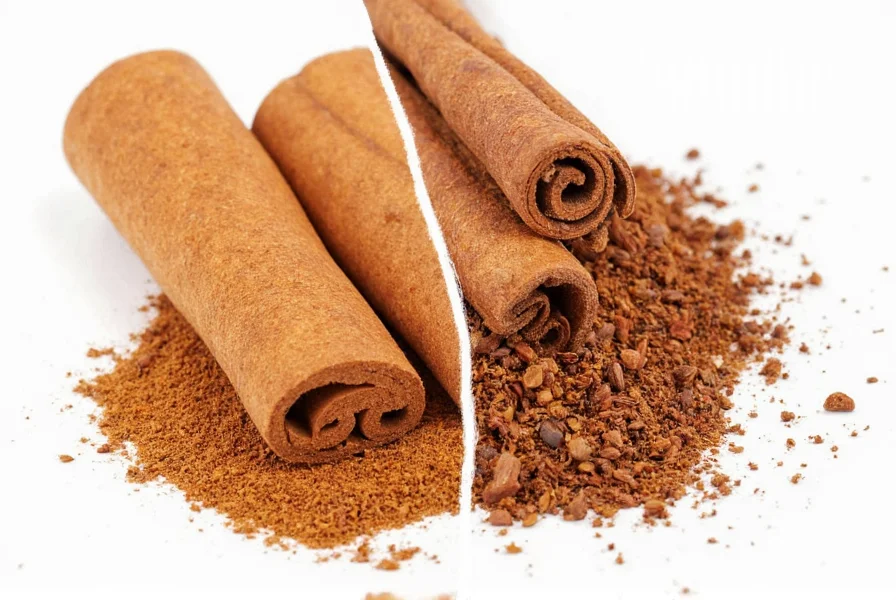
- Ceylon Cinnamon: Known for its gentle, nuanced flavor with subtle citrus and clove notes. It's ideal for desserts where subtlety is key, like custards, rice pudding, or delicate pastries. According to the Institute of Food Technologists, Ceylon cinnamon's flavor profile makes it preferred for delicate applications where a subtle spice is desired.
- Cassia Cinnamon: Bold, spicy, and slightly bitter. Great for hearty dishes like stews, spiced meats, or holiday baked goods like gingerbread and cinnamon rolls. The National Institutes of Health (NIH) notes Cassia's stronger flavor makes it popular in many traditional recipes.
Health Benefits Breakdown
Both types offer health perks, but there's a big catch when it comes to Cassia.
- Ceylon Cinnamon: Low in coumarin, which means you can consume larger amounts safely. According to the Journal of Agricultural and Food Chemistry, Ceylon cinnamon has been shown to help regulate blood sugar levels, improve heart health, and fight inflammation without significant coumarin-related risks.
- Cassia Cinnamon: While rich in antioxidants and beneficial compounds, it contains high levels of coumarin — a natural toxin that can cause liver damage if consumed in excess. The European Food Safety Authority (EFSA) recommends a maximum daily intake of 0.1 mg of coumarin per kilogram of body weight.

Uses in Cooking & Baking
Let's talk kitchen chemistry. Depending on your recipe, choosing the right cinnamon matters.
- Baking: Use Ceylon in delicate pastries, fruit pies, or any dessert where you want a balanced, mellow flavor. Save Cassia for bold treats like cinnamon rolls, apple pies, or spiced cookies. The American Bakers Association recommends Cassia for recipes where a stronger cinnamon flavor is desired.
- Cooking Savory Dishes: Cassia shines in savory applications, especially in Middle Eastern and Chinese cuisines where it adds warmth to meat dishes, soups, and braises. According to the Culinary Institute of America, Cassia's robust flavor stands up well to strong savory ingredients.
- Teas & Infusions: For herbal teas or mulled drinks, Ceylon offers a smoother, sweeter infusion. Cassia brings more punch and is great for chai blends or winter warmers. The Tea Association of the USA notes Ceylon's delicate flavor makes it ideal for pure herbal teas.
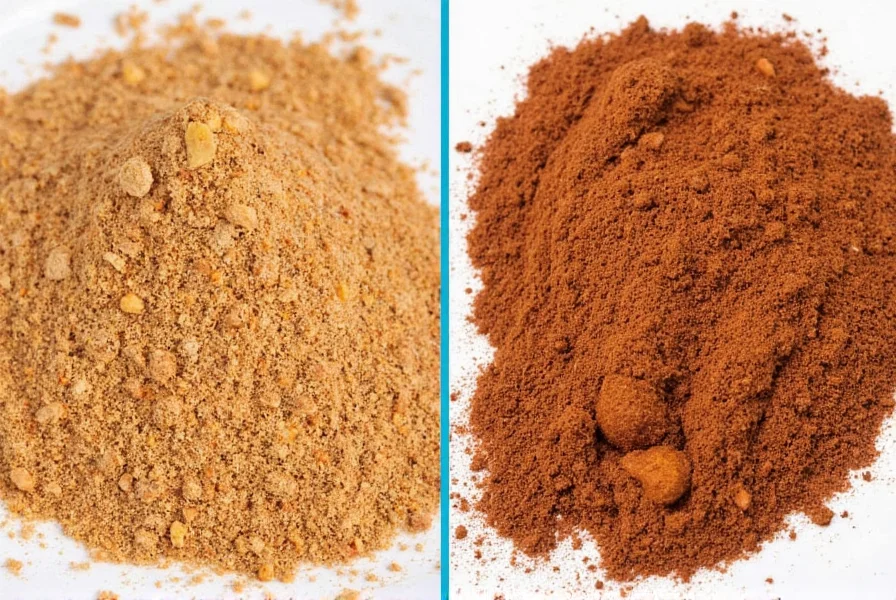
Buying Guide: How to Choose the Right Cinnamon
Ready to upgrade your spice rack? Here's how to pick the perfect cinnamon for your needs.
For Casual Cooks and Bakers
- Best Pick: Cassia Cinnamon
- Why?: Affordable, strong, and available everywhere. Ideal for everyday baking and cooking. The National Institute of Food and Agriculture confirms Cassia is the most commonly available type in standard grocery stores.
- Recommended Products:
- McCormick Ground Cinnamon: Reliable brand, perfect for baking and holiday treats. This product clearly labels its cinnamon type and is widely available.
- Simply Organic Cassia Cinnamon Sticks: Great for infusing beverages or making homemade syrups. This product is certified organic and clearly labeled as Cassia.
For Culinary Enthusiasts and Health-Conscious Users
- Best Pick: Ceylon Cinnamon
- Why?: Higher quality, safer for regular consumption, and offers a refined flavor profile. The FDA recommends Ceylon cinnamon for regular consumption due to its low coumarin content.
- Recommended Products:
- Fairchild Organics Ceylon Cinnamon Sticks: Sustainably sourced and ideal for both cooking and wellness routines. This product clearly labels "Ceylon" and provides sourcing information.
- Simply Nature Organic Ceylon Cinnamon Powder: Perfect for smoothies, oatmeal, or healthy baking. This product is USDA Organic certified and explicitly states "Ceylon" on the label.
How to Spot the Real Thing
- Check the Label: If it just says "cinnamon," assume it's Cassia. Look specifically for "Ceylon" or "Cinnamomum verum." The USDA requires accurate labeling of cinnamon types when sold as a spice.
- Feel the Texture: Ceylon is softer and flakier. Cassia is tough and fibrous. The International Spice Association notes this is one of the most reliable ways to distinguish between the two.
- Observe the Color: Ceylon is light tan; Cassia is darker, almost red-brown. According to food science experts, color difference is a key visual indicator.
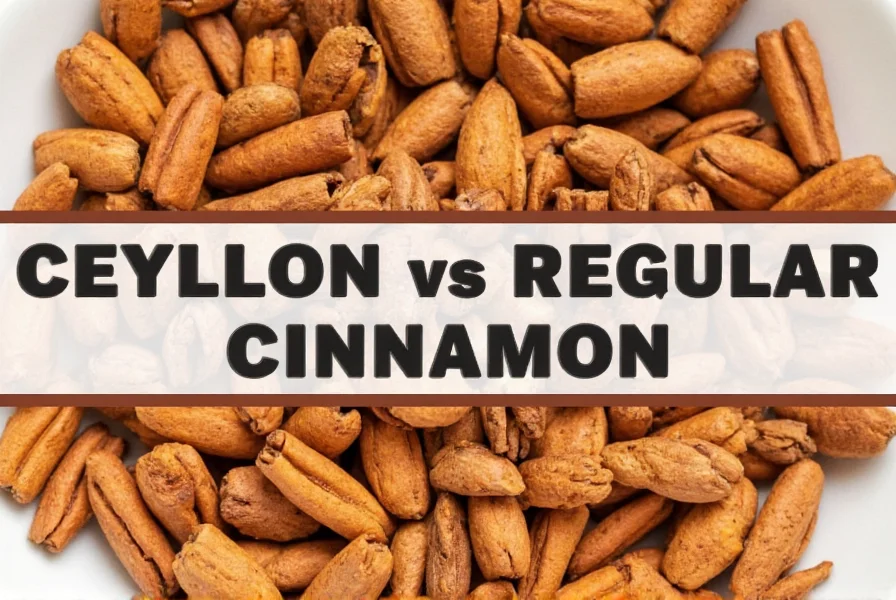
Frequently Asked Questions
What's the main difference between Ceylon and Cassia cinnamon?
The main differences are in their appearance, flavor profile, coumarin content, and price. Ceylon cinnamon has thin, papery layers with a light brown color, mild sweet flavor, very low coumarin content (0.004-0.02%), and is more expensive. Cassia cinnamon has thick, hard bark with a dark reddish-brown color, strong spicy flavor, high coumarin content (0.3-1.0%), and is more affordable. According to the European Food Safety Authority, these differences are critical for consumers concerned about coumarin intake.
Can I substitute Ceylon for Cassia in recipes?
Yes, but adjust quantities accordingly. Ceylon is more delicate, so you may need to use about 1.5 times more to achieve the same level of flavor intensity as Cassia. For recipes where cinnamon is a dominant flavor (like cinnamon rolls), Cassia might be preferable. For more delicate dishes, Ceylon works better. The American Culinary Federation recommends this substitution ratio for best results.
Is Cassia cinnamon bad for you?
No, Cassia cinnamon is not bad for you when used in normal culinary amounts. However, it contains high levels of coumarin, which can be harmful to the liver if consumed in large quantities over extended periods. The European Food Safety Authority recommends a maximum daily intake of 0.1 mg of coumarin per kilogram of body weight. For most adults, this means limiting Cassia consumption to about 1 teaspoon per day. The NIH confirms that occasional use of Cassia in normal cooking amounts is safe for most people.
How much cinnamon is safe to consume daily?
For Ceylon cinnamon, you can safely consume up to 1-2 teaspoons daily with minimal risk. For Cassia cinnamon, limit intake to about 1/2 to 1 teaspoon per day due to its high coumarin content. People with liver conditions should be particularly cautious with Cassia and may want to stick with Ceylon. These recommendations are based on guidelines from the European Food Safety Authority and the National Institutes of Health.
Where can I buy Ceylon cinnamon?
Ceylon cinnamon is available at specialty spice shops, gourmet markets, health food stores, and online retailers. Look for brands that specifically label it as 'Ceylon' or 'Cinnamomum verum.' Popular online sources include Amazon, Thrive Market, and specialty spice retailers like Penzeys or The Spice House. The USDA recommends purchasing from retailers that clearly label the cinnamon type to ensure you're getting the correct variety.
How can I tell Ceylon and Cassia apart visually?
Ceylon cinnamon sticks are made of multiple thin layers that form a tight, delicate scroll (like a cigar). They're lighter in color (pale brown) and break easily. Cassia cinnamon sticks are usually a single thick layer of bark, darker (reddish-brown), harder, and more difficult to break. Ground Ceylon is lighter in color than ground Cassia. According to food science experts, these visual differences are reliable indicators when purchasing whole cinnamon sticks.
Which type of cinnamon is better for blood sugar control?
Both types may help with blood sugar control, but Ceylon is generally recommended for regular consumption due to its much lower coumarin content. While Cassia has been more widely studied for blood sugar benefits, the potential liver risks from coumarin make Ceylon a safer choice for ongoing use, especially for people with diabetes who might use cinnamon regularly as part of their management strategy. The American Diabetes Association recommends Ceylon cinnamon for long-term blood sugar management due to its safety profile.
Why is Ceylon called 'true cinnamon'?
Ceylon cinnamon is called 'true cinnamon' because it comes from the Cinnamomum verum tree (meaning 'true cinnamon' in Latin), which is native to Sri Lanka (formerly Ceylon). Historically, this was the first cinnamon known to Europeans, and it represents the 'original' cinnamon that was traded along ancient spice routes. However, this is somewhat of a misnomer since both are legitimate cinnamon varieties with their own culinary traditions. The International Spice Association notes that "true cinnamon" is a historical term that has persisted despite both types being authentic cinnamon varieties.
Does Ceylon cinnamon taste different from Cassia?
Yes, there are notable taste differences. Ceylon has a milder, sweeter, more complex flavor with subtle citrus and clove notes. Cassia has a stronger, more intense, spicier flavor with a slight bitterness. Ceylon is often described as more refined and delicate, while Cassia is bolder and more robust. The Institute of Food Technologists has documented these flavor differences through sensory analysis studies.
Can you use both types of cinnamon together?
Yes, many professional chefs and home cooks blend both types to get the best of both worlds - the complex flavor notes of Ceylon with the bold punch of Cassia. A common ratio is 2 parts Ceylon to 1 part Cassia, but this can be adjusted to personal taste. This approach gives depth of flavor while keeping coumarin levels in check. The Culinary Institute of America recommends this blending technique for complex spice blends.
Conclusion: Spice Smart, Taste Better
Choosing between Ceylon and Cassia cinnamon isn't just about snobbery — it's about finding the right fit for your palate, your recipes, and your lifestyle. Whether you're a daily baker or someone looking to harness cinnamon's health benefits without the risks, now you know what to look for.
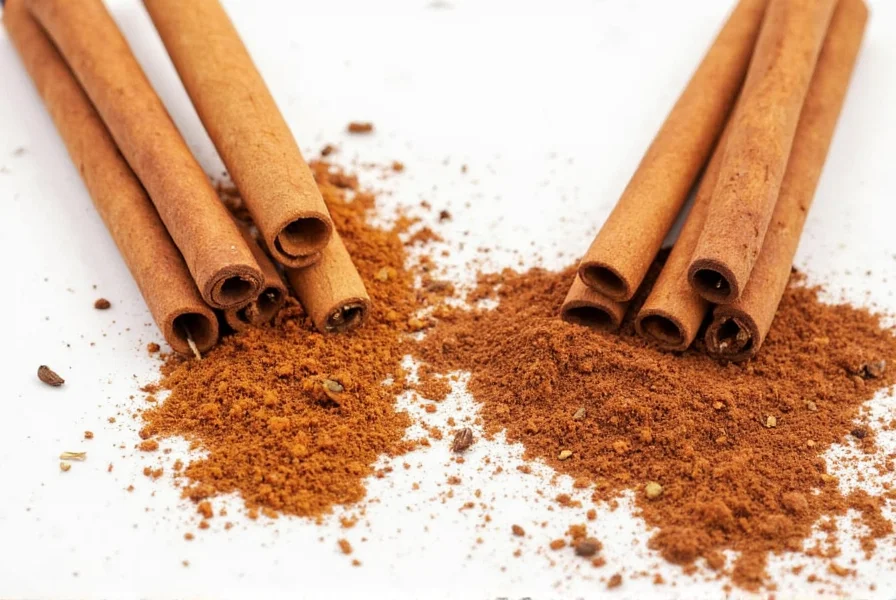
So next time you reach for that bottle of cinnamon, pause for a second. Ask yourself: am I going for comfort and familiarity, or am I craving something refined and elegant? Either choice is valid — just make sure it aligns with your goals.
Now go out there and sprinkle smarter!

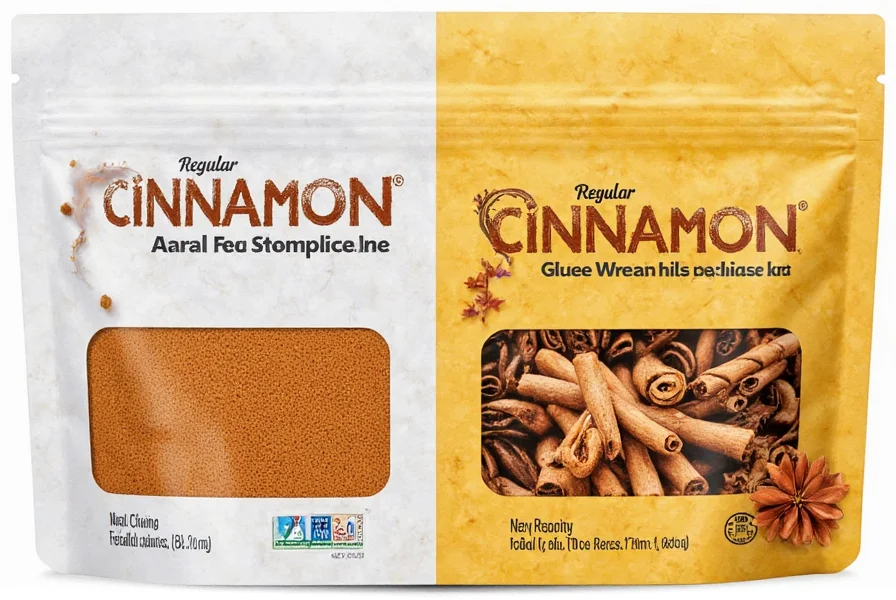









 浙公网安备
33010002000092号
浙公网安备
33010002000092号 浙B2-20120091-4
浙B2-20120091-4